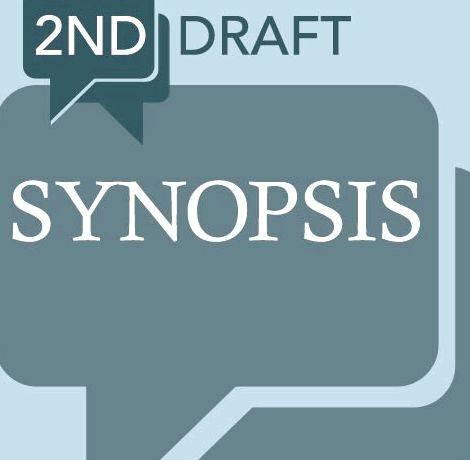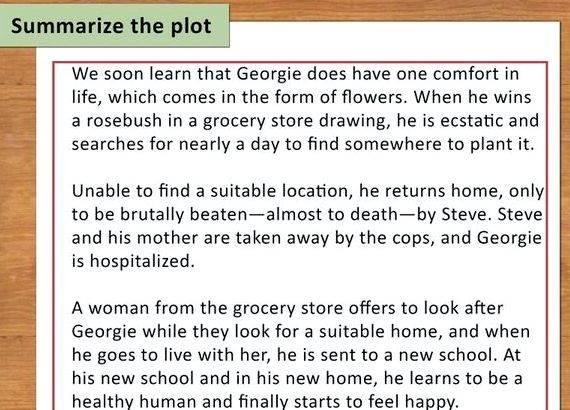Don’t forget to write an attention-getting synopsis. Here are three methods, from former literary agent Alice Orr, and mystery writers Kris Neri and Beth Anderson.
How to Write the Fiction Book Synopsis
By Alice Harron Orr
Synopsis defined: A narrative summary of the main action of your finished or unfinished booklength manuscript.
Suggested length: Up to ten pages for a book up to 100,000 words long, a few pages longer for longer books. (Individual editors may then request a longer version of the synopsis, but this is the ideal length for an introduction piece,) Note: The synopsis should always be double-spaced.
Any fiction submission, including a complete manuscript, should be accompanied by a synopsis. Therefore, it is crucial that the author develop a talent for synopsis writing. This is where you showcase your writing ability to the editor; and, thus, it is important that the synopsis be written as painstakingly as the rest of the book. Never dash off the synopsis as an afterthought. Craft it. Polish it. Perfect it, until it is your very best work. Think of this as a telling of your story in the tradition of the ancient tribal storyteller who had to tell a story that kept his audience interested or be banished into the wilderness with no supper. That’s motivation for you! So, tell your story in the most compelling and riveting manner possible, and keep that editor leaning ever closer to the tribal fire at storytime.
You begin that task by getting off to a fast start with an opening line that has been crafted into a truly stunning narrative hook. Then, move directly into the story. Do not amble in. Start where the excitement of the story starts, not before, just as you must start your book at the same point.
Don’t begin with backstory (the details of what happened before the book starts) or with description of any kind. You can feed these details in very gradually, never in large doses, and only as they are needed to understand the present action of the story. Open your synopsis, and your book, with conflict. The situation is underway which will plunge your protagonist into the conflict which is the reason for this story being told and the thing that makes it interesting. Before writing further, determine what the main points of your story are, especially (1) the complications that will happen to your protagonist (which must escalate in seriousness as the story progresses), what brings them on and how they are or are not resolved; and (2) the climactic scene and resolution of the story, which must be worked out specifically and in a fair amount of detail in the synopsis so that the editor can determine whether or not this is a satisfying and effective ending.
Write the synopsis in the present tense and the third person. This must be snappy, high interest writing; but be careful that the tone is appropriate to the kind of book your are writing. Begin with chapter one and continue on through the ending. If you are sending sample chapters, the action from those chapters must also be included in the synopsis.
Pay special attention to the verbs, using these in preference to adjectives to maximize the expressiveness of your synopsis. Use action verbs to sustain the sense of intense and compelling action that is ongoing in your story.

This is very important, as is the use of present tense to make that action seem more immediate.
Write the synopsis in the form of the running story summarized rather than chapter-by-chapter, unless a specific editor has requested otherwise of you individually for this specific book. One technique for preparing to write this running narrative, is to tell the story into a tape recorder, always in chronological order as the events will occur in the final writing. You can use this verbal narrative as a basis for the synopsis story. Some authors can make their synopsis flow more naturally by employing this device first.
Do not include separate character sketches with your synopsis. Instead, include brief description when a character is introduced, concentrating on the individual’s nature and personality rather than physical appearance. Do not include his/her age. Secondary characters need almost no character description in the synopsis other than to identify their function in the story. Use specific names for all persons (and for places as well).
Try to balance the synopsis in proportion to the book in terms of length, with the first half of the synopsis roughly paralleling the first half of the book, the second half paralleling the second half of the book. The exception to this is the ending which, in order to be worked out in detail as described above, may take a slightly disproportionate amount of space in the synopsis.
Do not dramatize or act out the story in the synopsis. This is a telling of the story as opposed to the showing of it, The one exception in this instance might be an occasional line of dialogue, but only if that line is short and has great impact.
Stick to the story line; don’t wander off track. And don’t overexplain. This is the “meat” of the story. Don’t get bogged down in details. Still, you must keep the interest level up; and, by all means, avoid writing what sounds like a catalogue of events (this happened, then that happened, then this happened. ). Avoid monotony at all costs!
Make sure there is enough happening here to fill a whole book. The editor is examining this synopsis to determine that you have enough material to sustain a workable full-length manuscript. However, do not contrive incidents to fill in space. Nor should you contrive incidents for the sake of non-stop action alone. Each story event must arise from what happened before it and lead to what happens after in a cause and effect continuum from beginning to end.
Avoid cliches both in phrasing and story action. Use this synopsis as a way of spotting these and other problems in the story itself. Correct these problems in both the story and the synopsis before submission. Other story weaknesses to watch for: outlandish plot developments, jumps in action without sufficient transition, places where the story lags.
The quality of the synopsis is critical to the selling of the popular novel. Nonetheless, you must neither say or think, “I can’t write a synopsis”, or even “I hate writing the synopsis.” The reality is that you have to do it and do it well. A negative attitude will be more likely to hinder than help in that process.
And if all of this seems a bit difficult, maybe even a little daunting, remember the mantra of those who succeed: DO IT ANYWAY
Kris Neri On Writing the Synopsis
I find a synopsis of any length miserable to write. I hate ’em. How can you do justice to your richly detailed novel in a few pages? However, after writing quite a number of them now, I find different approaches work at different lengths. For a 2-page synopsis, I would simply write a cover blurb that included the ending. Read a number of cover blurbs and get a sense of what they’re doing. Go for the drama, the high points, the emotional aspects of the story. And since it’s a synopsis, do that all the way to the ending, which you wouldn’t include if it were an actual cover blurb. With the blurb approach, you’ll probably end up in the length-ballpark without much effort.
For a longer sysnopsis, what I do is make a list of all the events I consider important; for character, I tie it into events. Then I go through and rate all of those items on a 1-3 scale, with 3 being the most important. Then I start writing a rough synopsis linking the 3’s, tying in a few of the 2’s, and dropping all the 1’s. It’s invariably very rough, and it takes a fair amount of revising before I can make it sound polished. But those approaches have both worked for me.
Mystery author Beth Anderson describes her method for producing a tight synopsis that sells books.






 Chuyen ga o tu my writing
Chuyen ga o tu my writing Rummy with different hands of writing
Rummy with different hands of writing Writing a retreat letter to your daughter
Writing a retreat letter to your daughter Writing in my face sheamus
Writing in my face sheamus Law and order svu monogamy summary writing
Law and order svu monogamy summary writing






